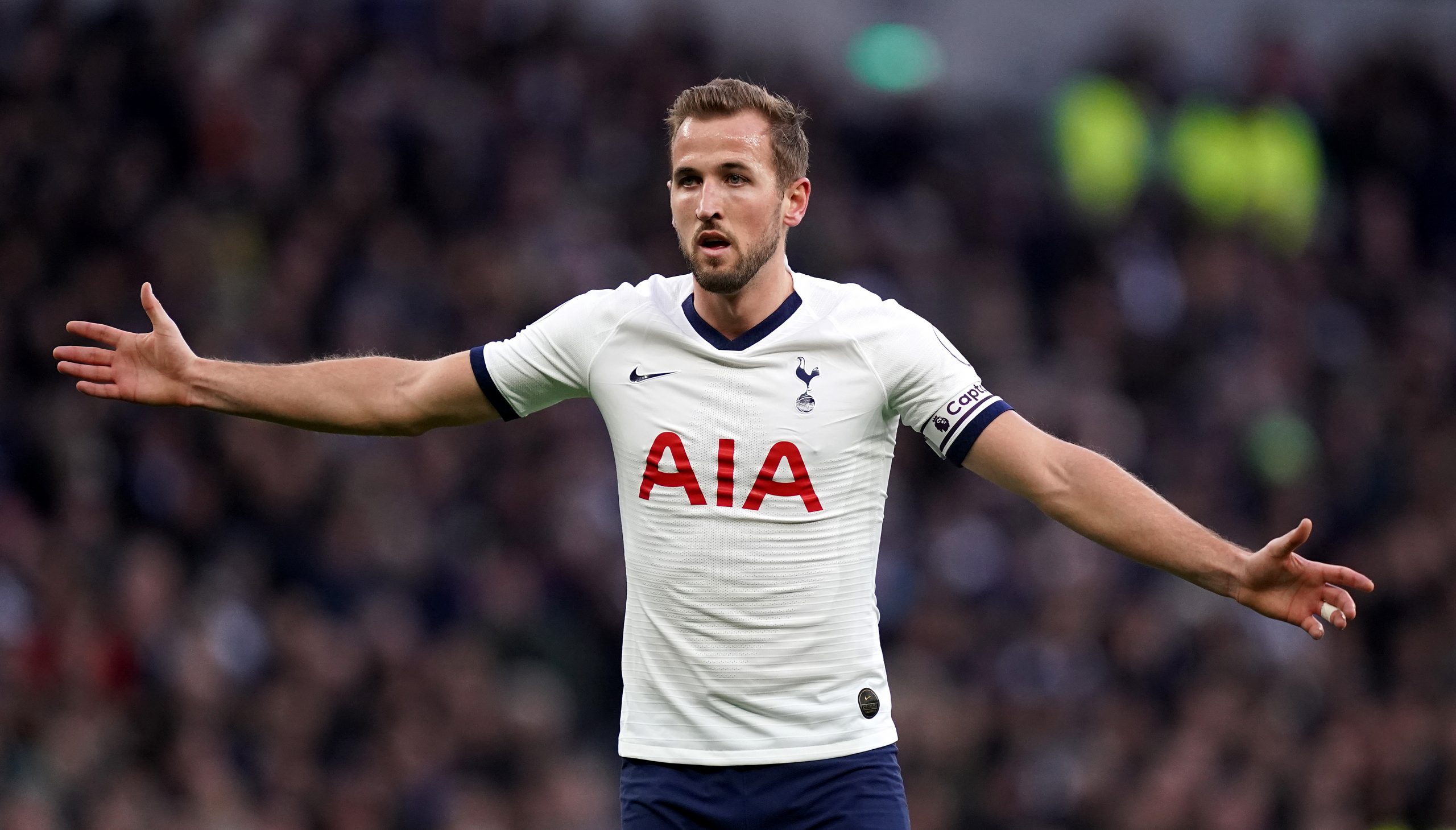"Harry Kane is Broken" fever is sweeping the soccer Twitter world. And that was before Harry Kane actually limped off the pitch against Southampton on Wednesday with an apparent hamstring injury. Nearly a year ago, Ted Knutson first mentioned on the StatsBomb podcast that Kane might be Fernando Torres-ing. I was resistant. I thought some time off this summer, time he did not have in 2018, would finally give him some rest and let his ankles heal, helping him to regain the proprioception that allowed him to Moneyball his way to becoming a shot monster despite his relatively limited athleticism.
That's certainly not happened. He’s declined markedly in terms of shot generation and has not made up for it by improving elsewhere. However, Kane has managed to maintain his elite finishing ability. Over his career, he has outperformed his non-penalty expected goals by around 20%. When he kicks the ball, he still hits it hard and to the right places.
The problem is that he does not shoot anymore. When Nabil Bentaleb and Ryan Mason were Spurs’ midfield in 2014–15, Harry Kane took 4 shots per match. At his best, in 2017–18 (before the ankle injury that truly derailed his career), he took nearly 6 shots per 90 minutes. Now, Harry Kane attempts under three shots per 90, and his xG per shot has decreased. His non-penalty xG per 90 is a paltry 0.3. Relatedly, in 2017–18 Tottenham had 1.8 xG per match but have dipped to 1.3 xG per match, even as Son Heung-Min remains excellent. It’s bad, folks.
Throughout the Tottenham fan sphere, debates rage over whether Kane himself is just bad, or the team is bad and so he's not getting service. It seems mostly the former, but if Kane can learn to age more gracefully, the team's other weaknesses will be more evident. To recover some of his greatness, Kane really needs to stop trying so hard to make things happen.
Kane used to be exceptional at letting off shots close to the goal. Using StatsBomb’s shooting charts, I divided Kane’s 2017–18 and 2019–20 shot maps into three areas: within 9 yards of the center of the goal, between 9 and 21 yards of the center of the goal, and 21 yards or more from the center of the goal.
Outside of 21 yards, Kane had 49 shots (not including free kicks) and 1.8 xG in 3000 minutes in 2017–18.
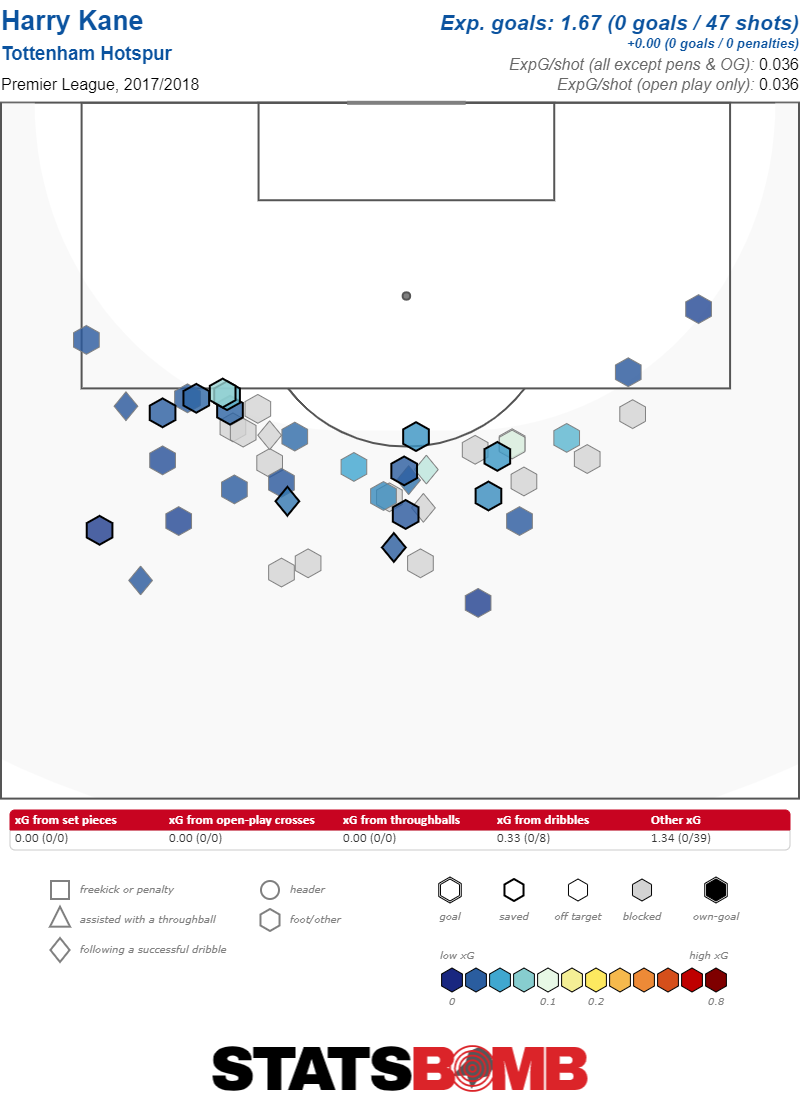
This season it’s 16 shots and 0.48 xG in 1800 minutes. Frankly, it was wasteful to have so many shots from outside the box, so reducing that volume from 1.5 per game to 0.8 per game is actually good.
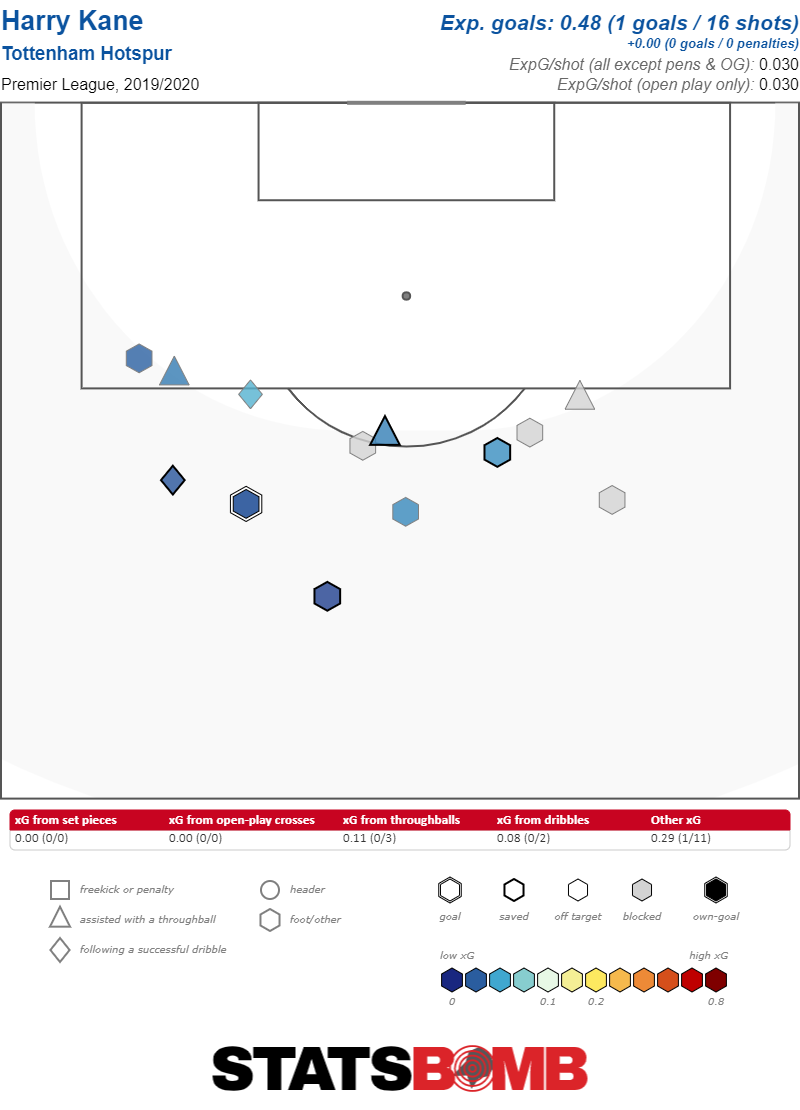
Since 2017–18, Kane's production from 9 yards to 21 yards from the center of the goal has decreased. This is the area where Kane would create shots inside small amounts of space and let them rip. In 2017–18 he had 83 shots and 11.3 xG in that zone.
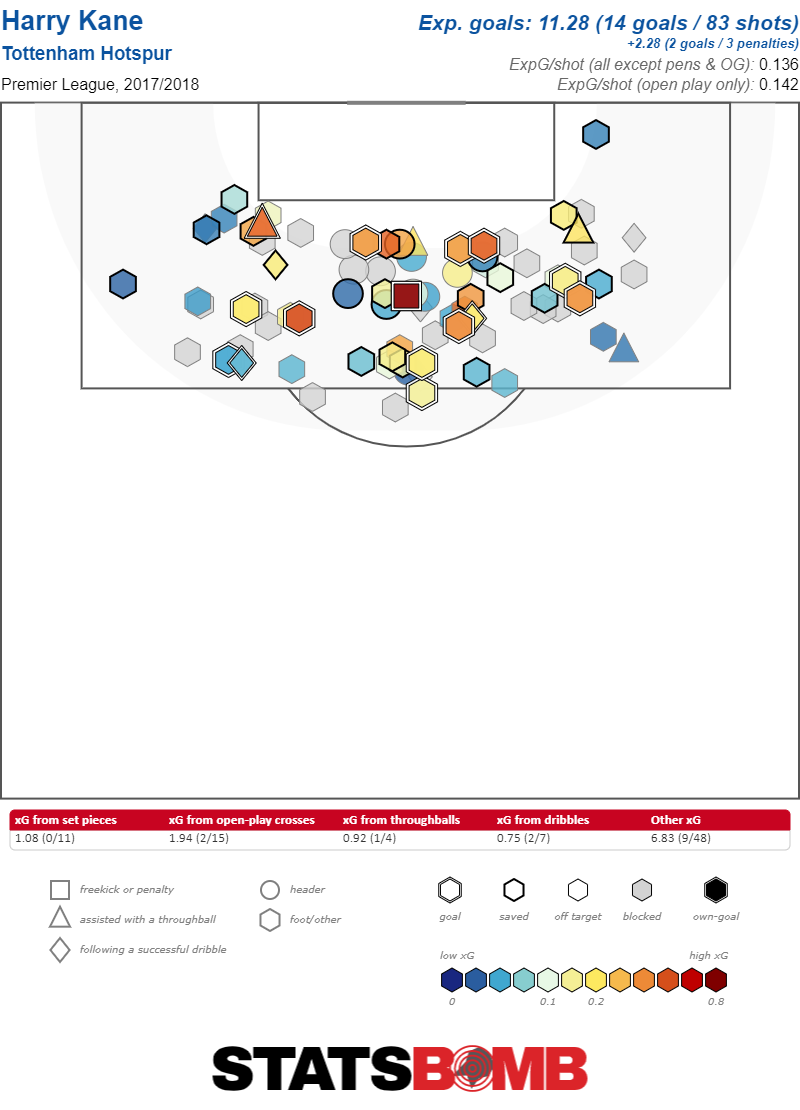
This year, 30 shots and 4.06 xG. He's lost another 0.75 shots per match and a tenth of an expected goal per match. That might seem almost insignificant, but over the course of a season it adds up to almost four goals, a large difference in any strikers' total. Little differences add up.
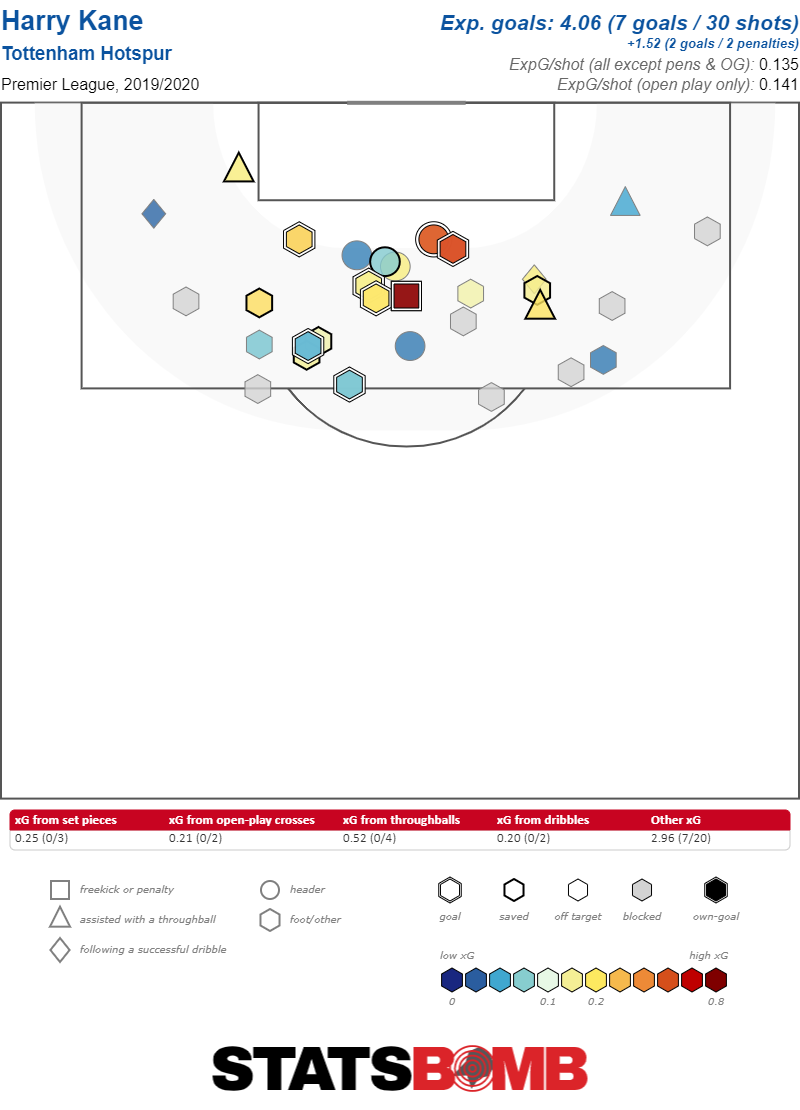
And then it gets worse. Within 9 yards of goal? Utter collapse. In 2017–18, Kane took 42 shots from within 9 yards of goal and had 10.5 xG.
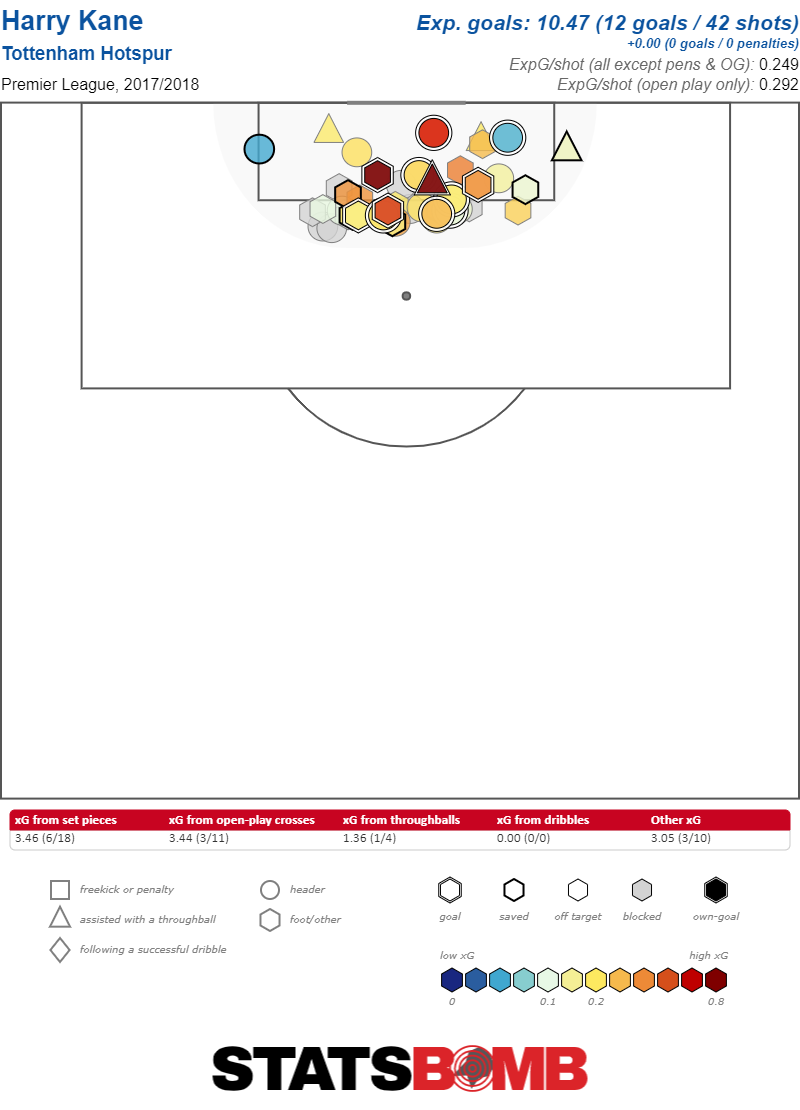
This season, he's at 4 shots and 0.77 xG. In 2017–18 he managed nearly 0.33 xG per 90 in the area around the goal. His numbers have dropped dramatically to 0.05 per 90. If a tenth of an expected goal per match adds up to real differences, a quarter of an expected goal per match lost is enough to cause a career to implode.
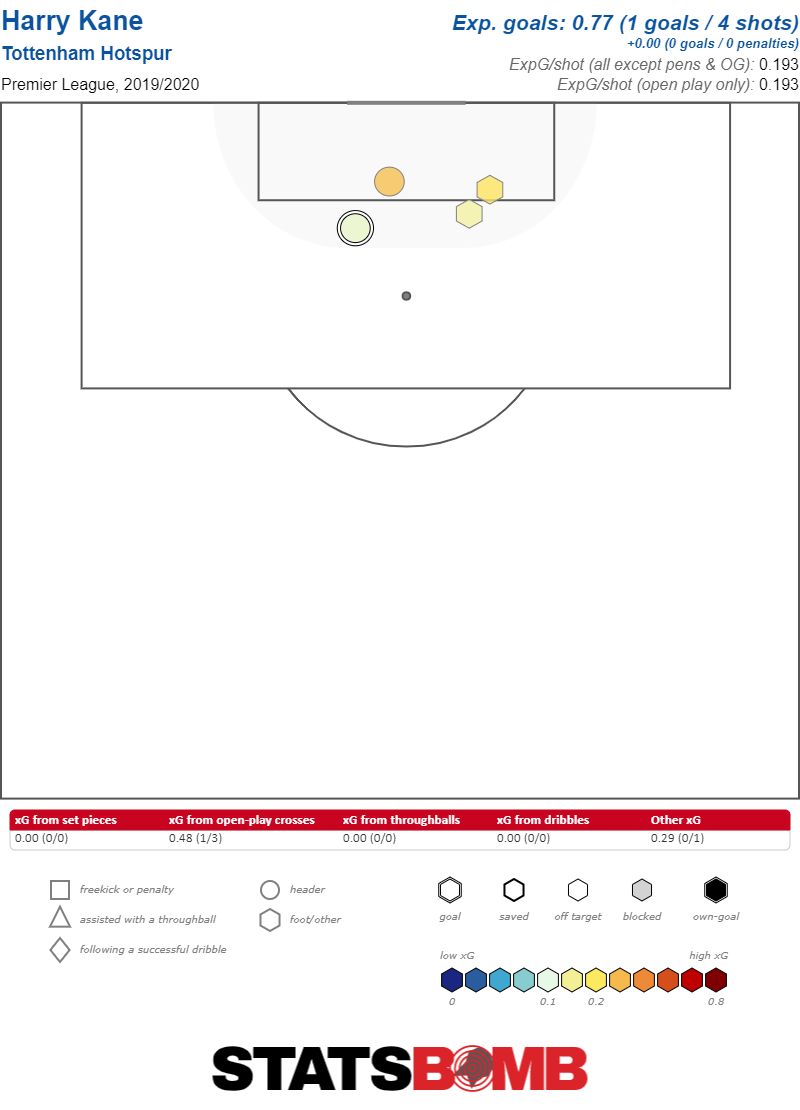
Harry Kane was never just a tap-in merchant, but he was great at it, and considering it requires a ton of skill, this made him extremely valuable. He could get into great positions and fire off a shot, or stick a leg out. He was just there, ready to shoot.
Now? Now he’s everywhere else, and it’s bad. Harry Kane’s defensive activity map from that 2017–18 season reveals a literal red cross in the center of the attacking area. He had 9.63 pressures per 90 that season.
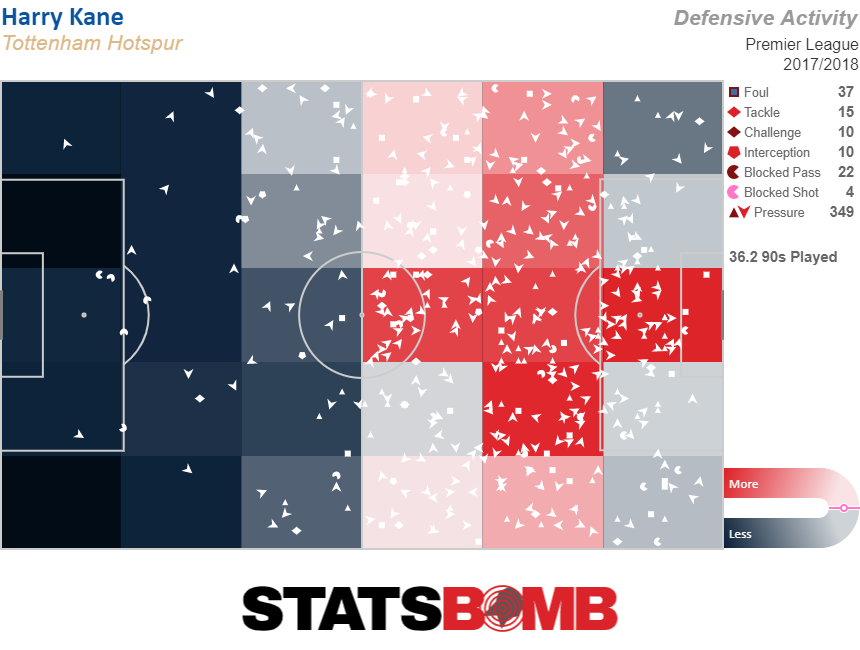
And then there's Harry Kane’s defensive activity map for this season. He has 16.32 pressures per 90 this season, yet the penalty box is gray. His activity is deeper and more dispersed across the pitch. His athleticism has decreased, but he's also running more—and everywhere—this year. These stats totally confounded me, as my impression watching Spurs was that he wasn’t making runs, but now I think he is, just during the wrong stage of play.
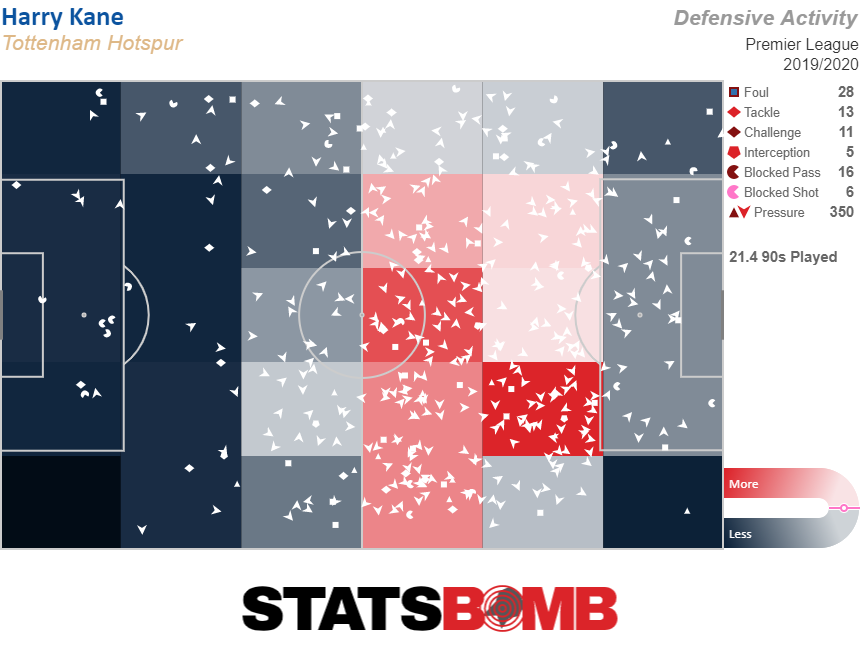
He is, verifiably, one of the greater kickers of a soccer ball in the world. He should kick more, and run less, when Spurs are out of possession, saving his energy for bursts in the box. When José Mourinho came to Spurs there was hope Kane would be told to sit in the box and wait for the ball, then kick the ball or head the ball. He has not. Kane is constantly receiving passes in the channels and trying to cut inside, something he should do far less. It’s not just a numbers thing. Every match makes it evident Kane out of position to do the thing he was put on this Earth to do, kick the ball hard at the corner of a football goal. He isn’t lurking off a defender's back shoulder and making runs to a post, leading to a shockingly small number of shots in the six-yard box. Instead, he’s lingering at the edges of the box, trying link up play and DO STUFF.
It almost seems like a bad habit, picked up from too many matches in which Moussa Sissoko and Harry Winks were unable to control possession in midfield. That midfield has been a mess for nearly two seasons now. Kane seems to feel some responsibility to help out, to chase the ball and to defend. In fact, he appears desperate to do so, perhaps thinking that if Spurs don’t have the ball, then he can’t get it and score. And in a sense he's right. But this is why Spurs’ inability to control the midfield has exacerbated Kane's health issues. Yet it’s not what he’s put on a soccer field to do. He was always solid at leading a press on the tip of the spear, arcing his runs in pressure, triggering Mauricio Pochettino’s press. But he has never been fast, nor has he been a great defensive forward.
When Kane was younger and healthier, he could do it all: run hard, get into channels, and still have the energy to make constant runs to the posts. He doesn’t have that anymore. He needs to accept it. When he returns from his latest injury, Tottenham need to create a system in which they win the ball back better without his help, and then maybe he can get back to doing what he does best: get ball, find space, kick ball hard.
Header image courtesy of the Press Association
